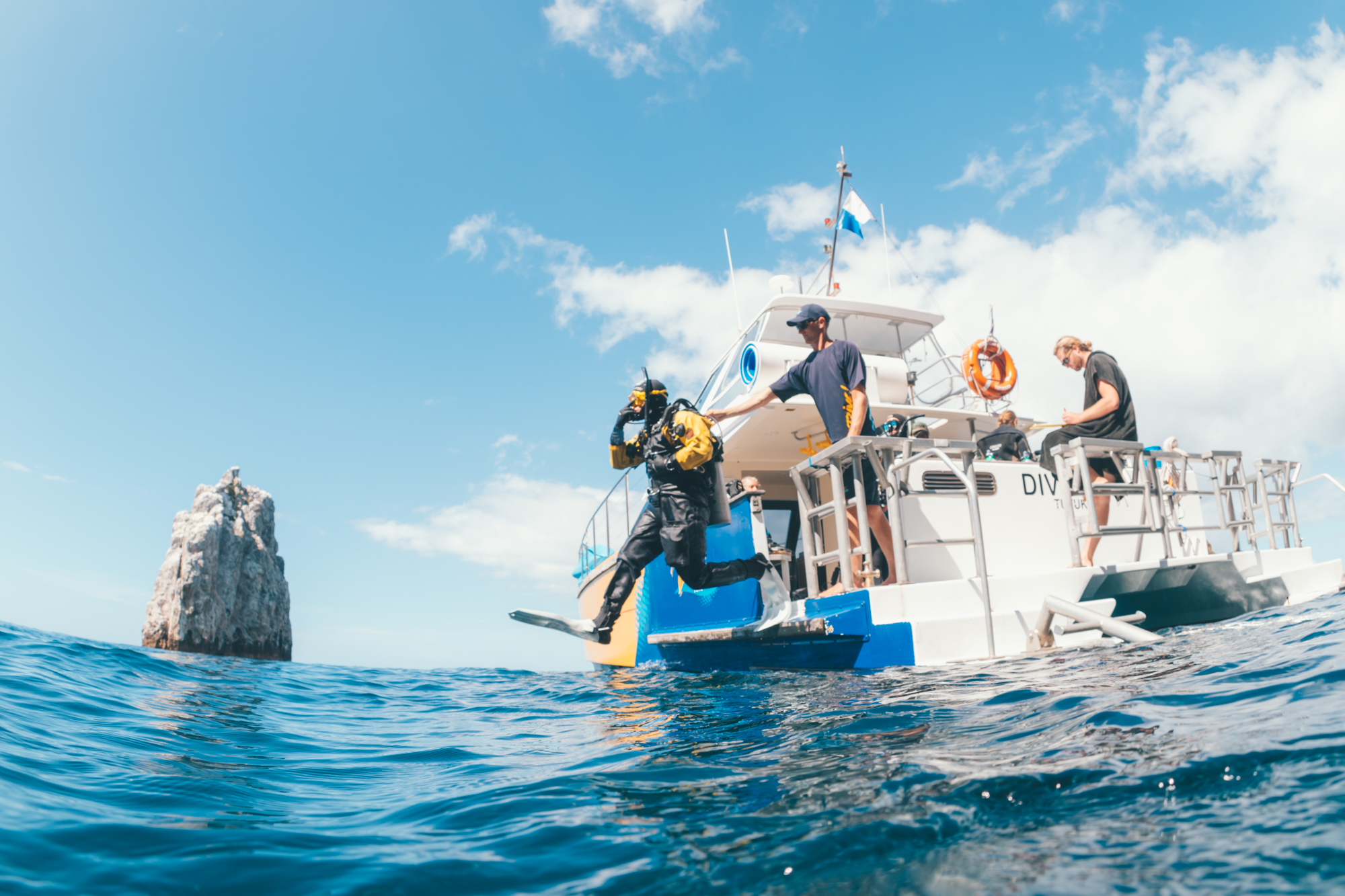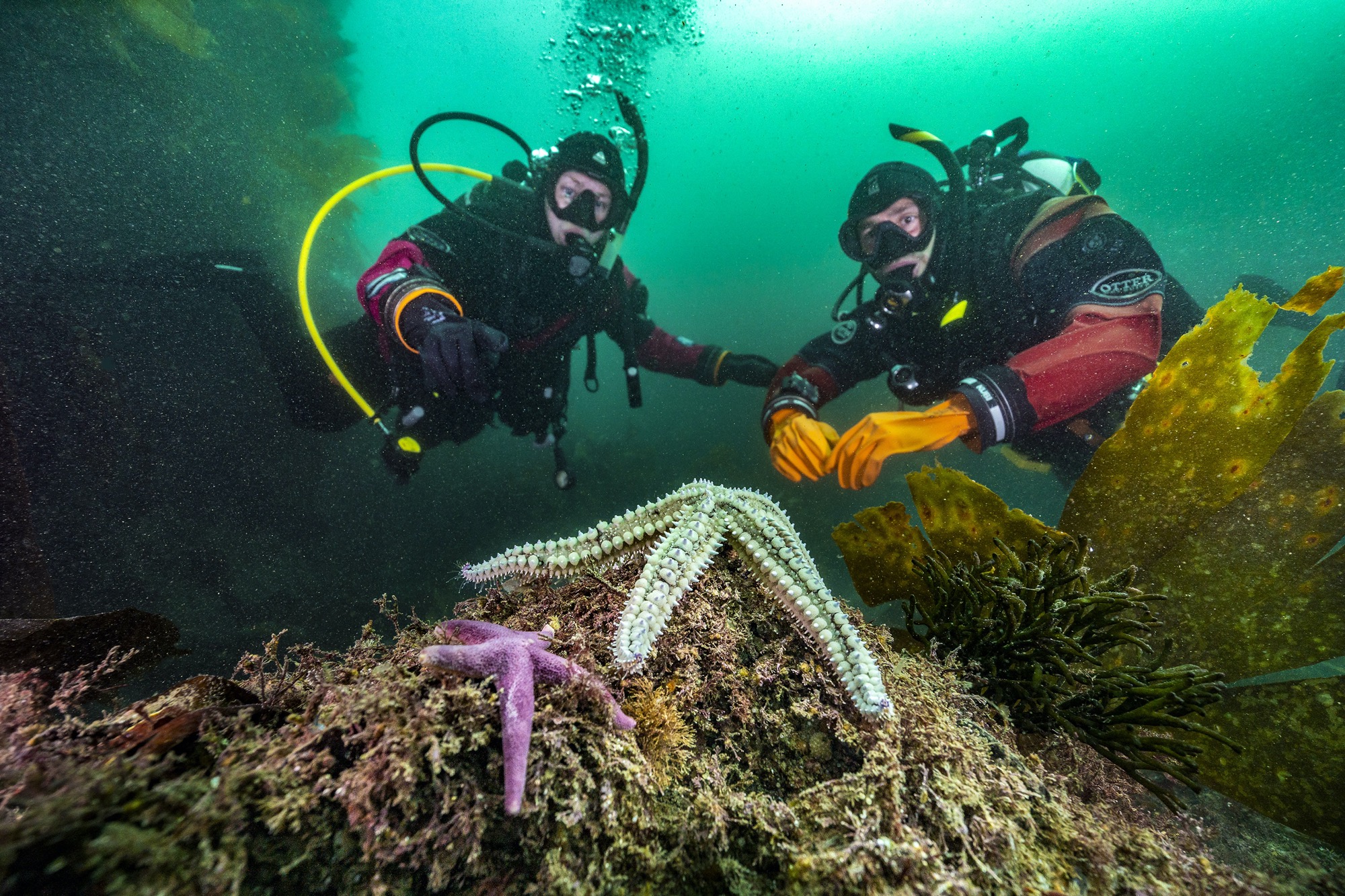Diving and exploring underwater is an activity we all get very excited about and enjoy. Exposure suits, one of the basic pieces of scuba diving equipment, play a critical role in providing us comfort, warmth, and safety while diving. Although wetsuits are very comfortable in tropical or temperate waters, dry suits are more comfortable for diving in colder environments. In this article, we will discuss the types of dry suits as well as some of their advantages and disadvantages.
During my career as a PADI Instructor, I have had the opportunity to work in different locations. In some of these locations, the use of dry suits was a necessity. Where I work now, in Iceland, dry suits are required. Water temperatures are around 2 degrees Celsius (36 degrees Fahrenheit). In such a diving environment, it is not possible to have a safe and enjoyable dive with wetsuits or semi-dry wetsuits.
Before diving into everything you need to know about dry suits, let’s briefly review the three major types of scuba diving exposure suits:
Body Suits – Also known as skin suits, these exposure suits sit close to the body and offer a minimal amount of warmth as well as protection for the skin. Wetsuits & Semi-Dry Wetsuits – The most common exposure suits for scuba divers. Wetsuits are made of neoprene, which provides insulation by sealing a thin layer of water between the skin and the suit. This layer of water is heated by body heat, keeping the user warm in mild temperatures. This type of exposure protection is suitable for use in tropical and temperate water temperatures. Semi-dry wetsuits – These exposure suits provide more insulation than a standard wetsuit but have no waterproofing features. The biggest difference between a semi-dry wetsuit and a standard wetsuit is the seal in the neck and wrist areas, usually made of rubber or silicone, which minimizes water circulation inside the suit. Dry suits – Dry suits fully protect divers from the water, preventing them from getting wet via a system of seals at the wrists and neck as well as watertight zippers. Underneath a dry suit, divers can wear undergarments to increase their insulation against colder temperatures.
In recreational diving, it is recommended to use dry suits for water temperatures below 15 degrees Celsius (59 degrees Fahrenheit). Of course, this varies depending on factors such as your thermal tolerance and the depth and duration of your dive.
Dry suit materials can be divided into some basic groups – neoprene foam, coated fabric, crushed neoprene, vulcanized rubber, trilaminate, and composite. In general, these are grouped into two main types of dry suits: neoprene dry suits and membrane (also known as shell, trilaminate or three layer) dry suits.
Neoprene dry suits are very popular for cold water diving because they are both affordable and practical, but let’s take a deeper look at whether they are the right choice for you.
Neoprene dry suits insulate the body thanks to the material they are made of. In other words, you can make comfortable dives with the insulation provided by the neoprene dry suit without the need to wear a thick undergarment in not-so-cold waters.
And neoprene dry suits are more durable than the alternative. This means they can be a good choice when you might encounter sharp objects or rocky points during a shore entry.
Lastly, neoprene dry suits are one of the most comfortable dry suits because the material stretches and gives.
But neoprene dry suits aren’t without their disadvantages. They are heavy and bulky, which may limit a diver’s mobility in the water and mean that the suit will take longer to dry. The weight and bulk of a neoprene dry suit can be difficult when traveling.
In addition, like a wetsuit, materials compress with depth, losing insulation qualities and some buoyancy. This can make weighting a challenge.
And while the insulation provided by neoprene dry suits is an advantage, it also limits the type of undergarments that can be worn with the suit. If you are using the suit in familiar water temperatures and you find the insulation provided by the neoprene dry suit sufficient, this can be an advantage. But if you are going to dive into colder or warmer waters in new locations, the situation may require adjustment due to the limited number of undergarment options.
Neoprene dry suits come in different thicknesses for use in various water temperatures, such as 7mm or 8mm, so remember to consider the water temperatures you plan to dive when selecting your dry suit.

Trilaminate dry suits are so called because they are composed of three layers of materials laminated together. These may be preferred by divers over neoprene dry suits because they are more streamlined, comfortable, and can be customized.
The biggest advantage of a trilaminate dry suit is that it is highly durable, has neither significant inherent positive or negative buoyancy, is light lightweight, and takes less space for travel and storage. They provide freedom while diving and reduce the effort required to move around.
Trilaminate dry suits come in different designs with various zipper and pocket configurations and can be tailored to the diver with ease.
However, trilaminate suits do not have insulating qualities, so divers do need to wear undergarments. The advantage of this is that the exposure protection can be customized to adapt to cold and warm water temperatures.
Furthermore, trilaminate suits do have less buoyancy than neoprene dry suits, so they are less affected by pressure changes during diving. Be sure to consider this when you are determining the amount of weight to use for a dive.
Trilaminate suits do have disadvantages as well. For most, the biggest disadvantage is that they are more expensive than neoprene dry suits. They also require more routine maintenance as the construction and material used are more fragile than neoprene.
Before using a dry suit, we recommend taking the PADI Dry Suit Diver Specialty course. This course goes over procedures for choosing a dry suit, weighting, buoyancy and maintenance. Click the button below to learn more about this course.
More Info on the Dry Suit Diver Specialty Course
This article was written by PADI IDC Staff Instructor, ANIL AVCI.
Share This